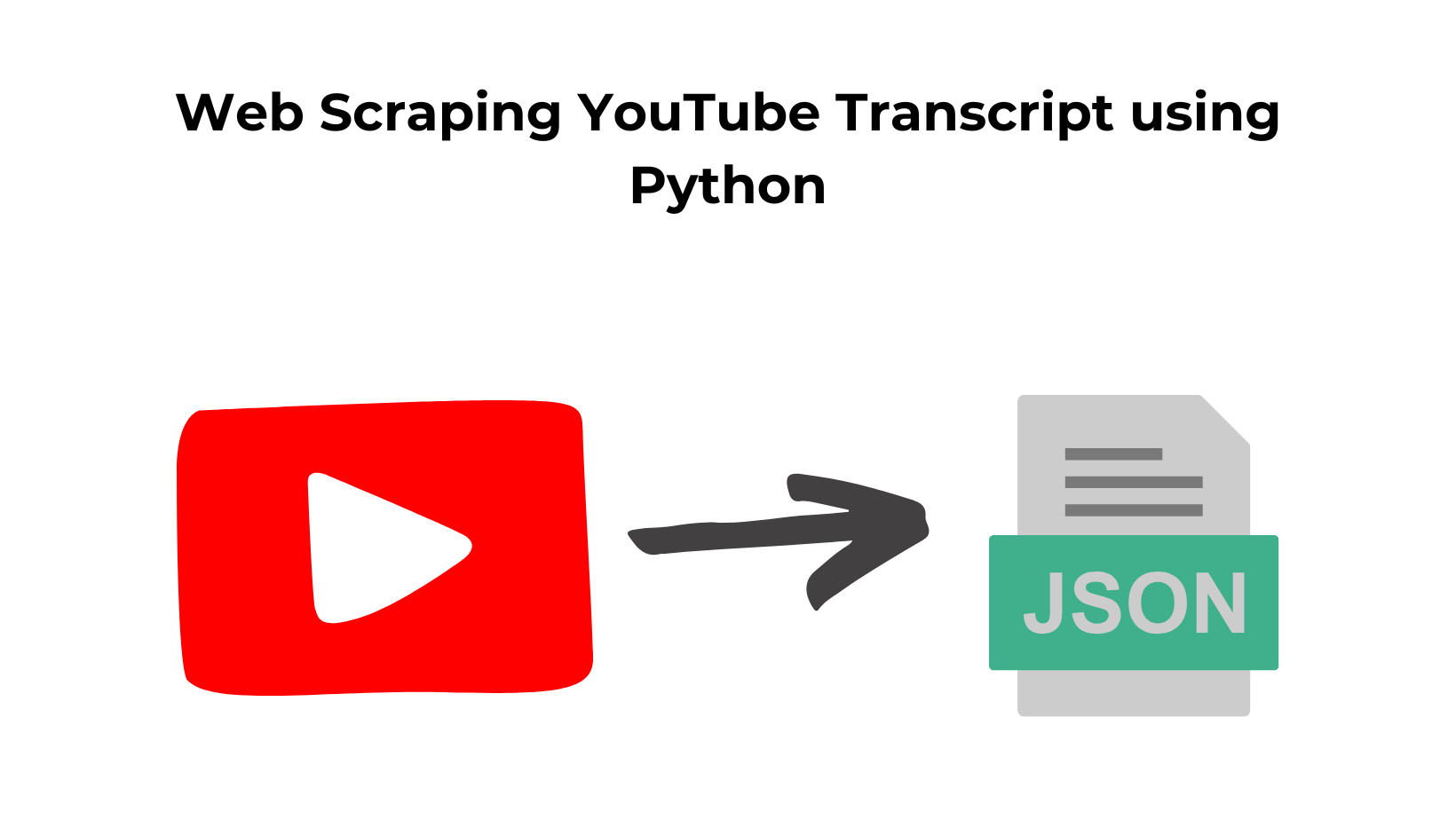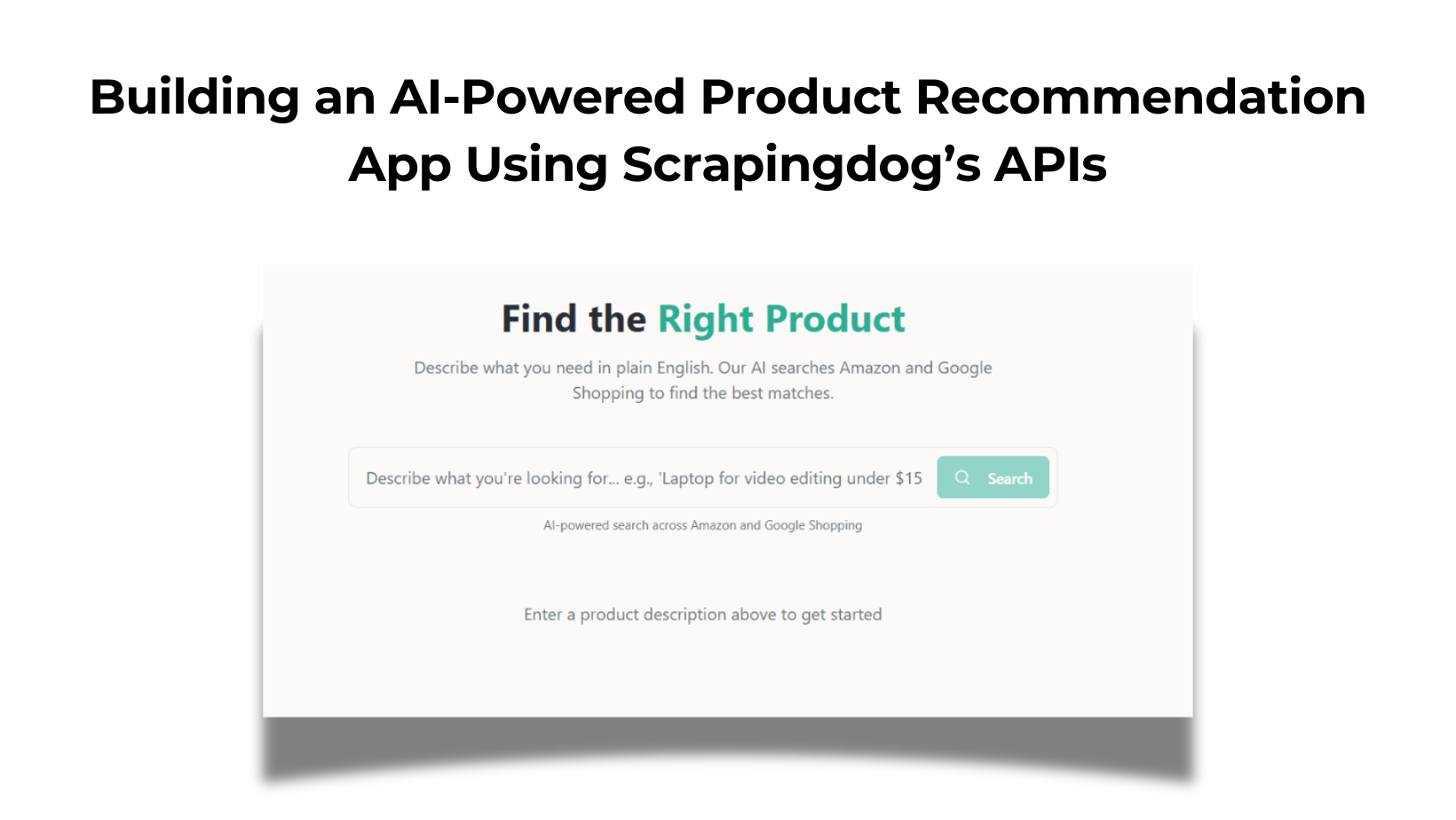TL;DR
- Python how-to: fetch YouTube transcripts as clean JSON via Scrapingdog’s YouTube Transcripts API.
- Setup: install
requests; pass yourapi_key+video_id; optionallanguageparameter. - Example: shown with video ID
deXSHXI8HuUand copy-ready code. - Extras: free transcript tool and a Make.com recipe to turn transcripts into LinkedIn posts; 1,000 free credits.
YouTube is more than just a video platform — it’s one of the largest searchable knowledge bases in the world. From lectures and podcasts to tutorials and interviews, there’s valuable content locked inside videos. The challenge? Extracting it.
In this guide, we’ll show you how to scrape YouTube transcripts programmatically using Python and the Scrapingdog YouTube Transcript API. Instead of battling YouTube’s HTML or unreliable third-party scrapers, you’ll fetch clean, structured JSON in a single API call, ready to analyze, export, or integrate into your own applications.
Why Scrape YouTube transcripts?
Here are a few use cases where this data is useful:
- Summarize videos without watching them end to end
- Build searchable archives of content
- Perform sentiment or keyword analysis
- Repurpose quotes for blogs, social posts, or research
Prerequisites
- Create a folder by any name you like. I am naming the folder as
youtube. - Now, create a Python file inside this folder. I hope you have Python installed on your computer. I am naming the file as
trans.py. - Now, install the
requestslibrary inside this folder. This will help us make an HTTP connection with the host. You can install it with the commandpip install requests. - Sign up for Scrapingdog’s free plan and get 1,000 credits to start scraping right away.
Scrape YouTube Transcript with Python
Before creating a scraper, it’s recommended to go through the API documentation. This API will help us pull a complete transcript for any given video.
In this tutorial, we’ll pull data from one of Scrapingdog’s YouTube videos. The ID of this video is deXSHXI8HuU.
import requests
api_key = "your-api-key"
url = "https://api.scrapingdog.com/youtube/transcripts/"
params = {
"api_key": api_key,
"v": "deXSHXI8HuU"
}
response = requests.get(url, params=params)
if response.status_code == 200:
data = response.json()
print(data)
else:
print(f"Request failed with status code: {response.status_code}")
In this code, we’re passing our personal API key along with the video ID. Let’s run it and check the output. You can execute it by running python trans.py in your terminal (cmd or bash).

I can even change the language of this data by using the language parameter.
We’ve also built a free tool that lets you extract transcripts from any YouTube video, powered by the same API behind this tutorial.
Recently, we built a tutorial in Make.com (a no-code automation tool), using the YouTube Transcript API. We built a workflow that uses the transcript from a video & converts it into a LinkedIn post. 🎥
This is one of the use case where you can use the API. There can be many such use cases.
Conclusion
YouTube transcripts are a goldmine of information, from making videos searchable to enabling sentiment analysis, content repurposing, or accessibility improvements. Instead of manually copying transcripts, you can automate the entire process using Python and a transcript scraping API.
With just a few lines of code, you can turn raw video pages into structured, usable text data. Whether you’re analyzing competitors, doing market research, or simply archiving your own content, scraping transcripts gives you cleaner insights and saves a ton of time.
Additional Resources
Here are some extra resources that you might find useful during your web scraping journey: –


